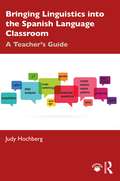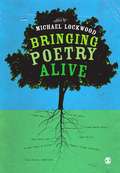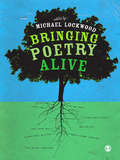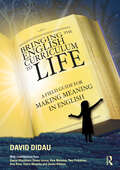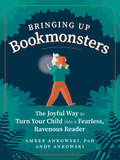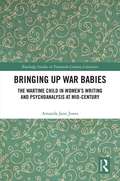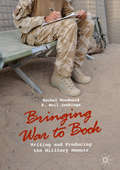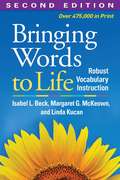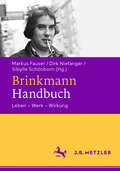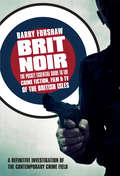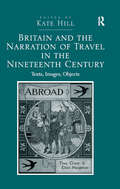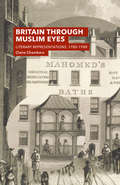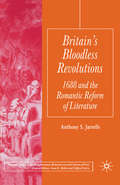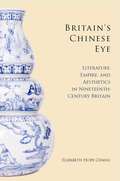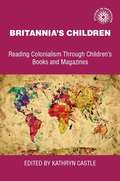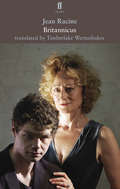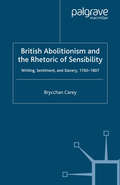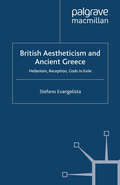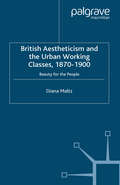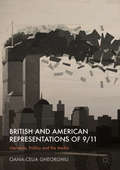- Table View
- List View
Bringing Linguistics into the Spanish Language Classroom: A Teacher's Guide
by Judy HochbergBringing Linguistics into the Spanish Language Classroom is a practical, time-saving resource that allows teachers to easily integrate the most interesting and important findings of Hispanic linguistics into their Spanish language classes. Teachers will find classroom-ready explanations and PowerPoint slides for each topic covered, as well as instructions and materials for in-class activities and take-home projects that will engage students in this fresh take on the target language. Slide presentations for each chapter are available online at www.routledge.com/9780367111960. The book covers aspects of Spanish from the trilled r to the personal a, from Indo-European origins to modern dialects, and from children’s first words to adult speech errors. An innovative set of five linguistics-based essential questions organizes and contextualizes this wide range of material: How is Spanish different from other languages? How is Spanish similar to other languages? What are the roots of Spanish? How does Spanish vary? How do people learn and use Spanish? Fully customizable to teacher and student interest, proficiency level, and time available in class, this book is ideal for Spanish language teachers looking to incorporate valuable linguistic insights into their curricula, even if they lack prior knowledge of this field. It is an excellent resource for Hispanic linguistics courses as well.
Bringing Linguistics into the Spanish Language Classroom: A Teacher's Guide
by Judy HochbergBringing Linguistics into the Spanish Language Classroom is a practical, time-saving resource that allows teachers to easily integrate the most interesting and important findings of Hispanic linguistics into their Spanish language classes. Teachers will find classroom-ready explanations and PowerPoint slides for each topic covered, as well as instructions and materials for in-class activities and take-home projects that will engage students in this fresh take on the target language. Slide presentations for each chapter are available online at www.routledge.com/9780367111960. The book covers aspects of Spanish from the trilled r to the personal a, from Indo-European origins to modern dialects, and from children’s first words to adult speech errors. An innovative set of five linguistics-based essential questions organizes and contextualizes this wide range of material: How is Spanish different from other languages? How is Spanish similar to other languages? What are the roots of Spanish? How does Spanish vary? How do people learn and use Spanish? Fully customizable to teacher and student interest, proficiency level, and time available in class, this book is ideal for Spanish language teachers looking to incorporate valuable linguistic insights into their curricula, even if they lack prior knowledge of this field. It is an excellent resource for Hispanic linguistics courses as well.
Bringing Poetry Alive: A Guide to Classroom Practice (PDF)
by Michael LockwoodOffering a wealth of ideas and support for ways to really bring poetry alive, this book draws on what is known to work, and explores fresh thinking. It will help both new and experienced teachers approach poetry with imagination and confidence. Written by people who have taught poetry in different settings for many years, and with contributions from poets Michael Rosen and James Carter, this book offers ideas on: - using drama - cross-curricular working - what to do with younger learners - inspiring children to write their own poems - and much more … An enjoyable and uplifting book, it is a must for anyone working with children aged 5 to 14 who is looking for inspiration for their poetry teaching. Michael Lockwood is Senior Lecturer in English and Education, University of Reading.
Bringing Poetry Alive: A Guide to Classroom Practice
by Michael LockwoodOffering a wealth of ideas and support for ways to really bring poetry alive, this book draws on what is known to work, and explores fresh thinking. It will help both new and experienced teachers approach poetry with imagination and confidence. Written by people who have taught poetry in different settings for many years, and with contributions from poets Michael Rosen and James Carter, this book offers ideas on: - using drama - cross-curricular working - what to do with younger learners - inspiring children to write their own poems - and much more … An enjoyable and uplifting book, it is a must for anyone working with children aged 5 to 14 who is looking for inspiration for their poetry teaching. Michael Lockwood is Senior Lecturer in English and Education, University of Reading.
Bringing the English Curriculum to Life: A Field Guide for Making Meaning in English
by David DidauBringing the English Curriculum to Life builds on David Didau’s groundbreaking book Making Meaning in English by showing how the principles of the original book can be applied in schools and classrooms. Drawing together experiences of designing, teaching, supporting and assessing English across the schools within Ormiston Academies Trust (OAT), this book demonstrates what an ambitious, coherently sequenced, broad and balanced English curriculum with successful adaption for students with SEND can look like in practice.Designed around the explicit teaching of the powerful conceptual knowledge students need to master the discipline, the book offers a fully resourced English curriculum packed with teaching suggestions and examples of high-quality practice. Covering intent, implementation and assessment, and outlining in detail what is included in each module for KS3 and 4, the curriculum can be adopted in its entirety, but is also flexible enough for departments to take modules and slot them into their own curriculum.Providing an inspiring model for teaching English that enables all students to succeed, this is an essential resource for all English teachers and school leaders responsible for curriculum development.
Bringing the English Curriculum to Life: A Field Guide for Making Meaning in English
by David DidauBringing the English Curriculum to Life builds on David Didau’s groundbreaking book Making Meaning in English by showing how the principles of the original book can be applied in schools and classrooms. Drawing together experiences of designing, teaching, supporting and assessing English across the schools within Ormiston Academies Trust (OAT), this book demonstrates what an ambitious, coherently sequenced, broad and balanced English curriculum with successful adaption for students with SEND can look like in practice.Designed around the explicit teaching of the powerful conceptual knowledge students need to master the discipline, the book offers a fully resourced English curriculum packed with teaching suggestions and examples of high-quality practice. Covering intent, implementation and assessment, and outlining in detail what is included in each module for KS3 and 4, the curriculum can be adopted in its entirety, but is also flexible enough for departments to take modules and slot them into their own curriculum.Providing an inspiring model for teaching English that enables all students to succeed, this is an essential resource for all English teachers and school leaders responsible for curriculum development.
Bringing Up Bookmonsters: The Joyful Way to Turn Your Child into a Fearless, Ravenous Reader
by Amber Ankowski Andy AnkowskiThe no-stress, ferociously fun way to raise a kid who loves to read—complete with reading recommendations and activities to inspire! Teaching your child to read is monstrously important, and there&’s no better way to do it than with everyday opportunities for laughter and play. Bringing Up Bookmonsters is full of fun ways to build literacy at home—no flashcards or timers required! Feed your budding bookmonster&’s brain as you: Turn storytime into playtime to build comprehension.Get giggling with games and jokes that reinforce spelling.Converse at family meals with varied vocabulary.Satisfy your bookmonster&’s cravings with books they are sure to devour! These tips and many more make it easy to help your child develop an insatiable appetite for reading—and have a tremendously good time doing it!
Bringing Up War-Babies: The Wartime Child in Women’s Writing and Psychoanalysis at Mid-Century (Routledge Studies in Twentieth-Century Literature)
by Amanda JonesThe figure of the wartime child in the mid-twentieth century unsettles and disturbs. This book employs a range of material – biographical, literary and historical – to chart some of the surprising and unanticipated crossovers between women’s writing and early psychoanalysis in the years of the Second World War and the decades before and after. This volume includes examples of children’s adventure fiction, as well as works written for adult audiences and important and previously unrecognized similarities are noted. The war was a disruptive influence in the lives of all who lived through it. Although active self-censorship is observed in the behaviour and attitudes of adults at this time, this book demonstrates how fictional children are able to articulate feelings such as anxiety and fear that adults were under pressure to conceal or to repress and at times, the figure of the wartime child becomes a surrogate for the writer herself or her suppressed fears and anxiety. When peace returned, this study finds women writers quick to identify and communicate a discomfiting new ambivalence between parents and children.
Bringing Up War-Babies: The Wartime Child in Women’s Writing and Psychoanalysis at Mid-Century (Routledge Studies in Twentieth-Century Literature)
by Amanda JonesThe figure of the wartime child in the mid-twentieth century unsettles and disturbs. This book employs a range of material – biographical, literary and historical – to chart some of the surprising and unanticipated crossovers between women’s writing and early psychoanalysis in the years of the Second World War and the decades before and after. This volume includes examples of children’s adventure fiction, as well as works written for adult audiences and important and previously unrecognized similarities are noted. The war was a disruptive influence in the lives of all who lived through it. Although active self-censorship is observed in the behaviour and attitudes of adults at this time, this book demonstrates how fictional children are able to articulate feelings such as anxiety and fear that adults were under pressure to conceal or to repress and at times, the figure of the wartime child becomes a surrogate for the writer herself or her suppressed fears and anxiety. When peace returned, this study finds women writers quick to identify and communicate a discomfiting new ambivalence between parents and children.
Bringing War to Book: Writing and Producing the Military Memoir
by Rachel Woodward K. Neil JenkingsThis book explores how military memoirs come to be written and published. Looking at the journeys through which soldiers and other military personnel become writers, the authors draw on over 250 military memoirs published since 1980 about service with the British armed forces, and on interviews with published military memoirists who talk in detail about the writing and production of their books. A range of themes are explored including: the nature of the military memoir; motivations for writing; authors’ reflections on their readerships; inclusions and exclusions within the text; the memories and materials that authors draw on; the collaborations that make the production and publication of military memoirs possible; and the issues around the design of military memoirs' distinctive covers.Written by two leading commentators on the sociology of the military, Bringing War to Book offers a new and original argument about the representations of war and the military experience as a process of social production. The book will be of interest to students and scholars across a range of disciplines including sociology, history, and cultural studies.
Bringing Words To Life, Second Edition (PDF): Robust Vocabulary Instruction
by Isabel L. Beck Margaret G. McKeown Linda KucanHundreds of thousands of teachers have used this highly practical guide to help K-12 students enlarge their vocabulary and get involved in noticing, understanding, and using new words. Grounded in research, the book explains how to select words for instruction, introduce their meanings, and create engaging learning activities that promote both word knowledge and reading comprehension. The authors are trusted experts who draw on extensive experience in diverse classrooms and schools. Sample lessons and vignettes, children's literature suggestions, "Your Turn" learning activities, and a Study Guide for teachers enhance the book's utility as a classroom resource, professional development tool, or course text.
Brinkmann-Handbuch: Leben – Werk – Wirkung
Das herausragende Werk Rolf Dieter Brinkmanns hat weit über den deutschsprachigen Raum hinaus Resonanz gefunden. Die gegenwärtige Aktualität der Popliteratur macht einen grundlegenden und strukturierten Überblick zum Autor notwendig. Das Handbuch bietet erstmals eine Gesamtdarstellung aller Texte und der Medien, mit denen Brinkmann gearbeitet hat. Aufschlussreiche Querschnitte durch dieses vielschichtige Œuvre bieten die Kapitel zu den Kontexten: Sie widmen sich der Nachkriegsliteratur, der Moderne sowie der Wissensgeschichte. Konzepte wie Präsenz, Materialität und Intermedialität, Literatur- und Kunsttheorie führen hin zu den umfassenden Einzelanalysen. Beiträge zur deutschsprachigen und internationalen Wirkung, ein Anhang mit ausführlichen Informationen zu den Ausgaben und der Nachlasssituation sowie zur Sekundärliteratur runden den Band ab.
Brit Noir: The Pocket Essential Guide to British Crime Fiction, Film & TV (Pocket Essential Ser.)
by Barry ForshawBarry Forshaw is acknowledged as a leading expert on crime fiction from European countries, but his principal area of expertise is in the British crime arena, as demonstrated in such books as British Crime Writing, The Rough Guide to Crime Fiction and British Crime Film.After the success of earlier entries in the series, Nordic Noir and Euro Noir, he returns to the British Isles to produce the ultimate reader's guide to modern British crime fiction (taking in the best from England, Scotland, Wales, and Ireland). The word 'Noir' is used in its loosest sense as every major living British and Irish writer is considered, often through a concentration on one or two key books, and exciting new talents are highlighted for the reader.Forshaw's personal acquaintance with writers, editors and publishers is unparalleled, so Brit Noir features interviews with (and quotations from) the writers, editors and publishers themselves. The characteristics of the very different writing from London, the regions, Scotland, Ireland and Wales are examined and celebrated.'Unsurprisingly Barry Forshaw's Brit Noir is a wonderful reference book that any self-respecting and serious connoisseur of crime fiction needs to have on their book-shelf' - Shots Magazine'A must-have for crime fans: for reminding yourself about old favourites, for finding new authors, and for that "What shall we watch?" moment' - Mystery PeopleLook out for the other books in Barry Forshaw's Noir series, Euro Noir, Nordic Noir, American Noir and Historical Noir, and for his latest book, Crime Fiction: A Reader's Guide.
Britain and the Narration of Travel in the Nineteenth Century: Texts, Images, Objects
by Kate HillInterrogating the multiple ways in which travel was narrated and mediated, by and in response to, nineteenth-century British travelers, this interdisciplinary collection examines to what extent these accounts drew on and developed existing tropes of travel. The three sections take up personal and intimate narratives that were not necessarily designed for public consumption, tales intended for a popular audience, and accounts that were more clearly linked with discourses and institutions of power, such as imperial processes of conquest and governance. Some narratives focus on the things the travelers carried, such as souvenirs from the battlefields of Britain’s imperial wars, while others show the complexity of Victorian dreams of the exotic. Still others offer a disapproving glimpse of Victorian mores through the eyes of indigenous peoples in contrast to the imperialist vision of British explorers. Swiss hotel registers, guest books, and guidebooks offer insights into the history of tourism, while new photographic technologies, the development of the telegraph system, and train travel transformed the visual, audial, and even the conjugal experience of travel. The contributors attend to issues of gender and ethnicity in essays on women travelers, South African travel narratives, and accounts of China during the Opium Wars, and analyze the influence of fictional travel narratives. Taken together, these essays show how these multiple narratives circulated, cross-fertilised, and reacted to one another to produce new narratives, new objects, and new modes of travel.
Britain and the Narration of Travel in the Nineteenth Century: Texts, Images, Objects
by Kate HillInterrogating the multiple ways in which travel was narrated and mediated, by and in response to, nineteenth-century British travelers, this interdisciplinary collection examines to what extent these accounts drew on and developed existing tropes of travel. The three sections take up personal and intimate narratives that were not necessarily designed for public consumption, tales intended for a popular audience, and accounts that were more clearly linked with discourses and institutions of power, such as imperial processes of conquest and governance. Some narratives focus on the things the travelers carried, such as souvenirs from the battlefields of Britain’s imperial wars, while others show the complexity of Victorian dreams of the exotic. Still others offer a disapproving glimpse of Victorian mores through the eyes of indigenous peoples in contrast to the imperialist vision of British explorers. Swiss hotel registers, guest books, and guidebooks offer insights into the history of tourism, while new photographic technologies, the development of the telegraph system, and train travel transformed the visual, audial, and even the conjugal experience of travel. The contributors attend to issues of gender and ethnicity in essays on women travelers, South African travel narratives, and accounts of China during the Opium Wars, and analyze the influence of fictional travel narratives. Taken together, these essays show how these multiple narratives circulated, cross-fertilised, and reacted to one another to produce new narratives, new objects, and new modes of travel.
Britain Through Muslim Eyes: Literary Representations, 1780-1988
by Claire ChambersWhat did Britain look like to the Muslims who visited and lived in the country in increasing numbers from the late eighteenth century onwards? This book is a literary history of representations of Muslims in Britain from the late eighteenth century to the eve of Salman Rushdie's publication of The Satanic Verses (1988).
Britain's Bloodless Revolutions: 1688 and the Romantic Reform of Literature (Palgrave Studies in the Enlightenment, Romanticism and Cultures of Print)
by A. JarrellsBritain's Bloodless Revolutions explores the relationship of the emerging category of Literature to the emerging threat of popular violence between the Bloodless Revolution and the Romantic turn from revolution to reform. The book argues that at a time when the political nature of the Bloodless Revolution became a subject of debate - in the period defined by France's famously bloody revolution - 'Literature' emerged as a kind of political institution and constituted a bloodless revolution in its own right.
Britain's Chinese Eye: Literature, Empire, and Aesthetics in Nineteenth-Century Britain
by Elizabeth ChangThis book traces the intimate connections between Britain and China throughout the nineteenth century and argues for China's central impact on the British visual imagination. Chang brings together an unusual group of primary sources to investigate how nineteenth-century Britons looked at and represented Chinese people, places, and things, and how, in the process, ethnographic, geographic, and aesthetic representations of China shaped British writers' and artists' vision of their own lives and experiences. For many Britons, China was much more than a geographical location; it was also a way of seeing and being seen that could be either embraced as creative inspiration or rejected as contagious influence. In both cases, the idea of China's visual difference stood in negative contrast to Britain's evolving sense of the visual and literary real. To better grasp what Romantic and Victorian writers, artists, and architects were doing at home, we must also understand the foreign "objects" found in their midst and what they were looking at abroad.
Britannia's children: Reading colonialism through children's books and magazines (Studies in Imperialism #26)
by Kathryn CastleMany European countries, their imperial territories, and rapidly Europeanising imitators like Japan, established a powerful zone of intellectual, ideological and moral convergence in the projection of state power and collective objectives to children. This book is an introduction to the 'imperial' images of the Indian, African and Chinese, created for the youth of Britain through their history textbooks and popular periodicals. Focusing on materials produced for children, by textbook historians and the popular press, it provides a study of both the socialization of the young and the source of race perceptions in 20th-century British society. Against a backdrop of promoting the 'wonderful development of the Anglo-Saxon race', textbook historians approached British India as the primary example of imperial achievement. Chinese characters continued to feature in the periodicals in a variety of situations, set both in China and the wider world. Africa was a favoured setting for adventure in the years between the world wars, and African characters of long standing retained their popularity. While much of the 'improving' material began to disappear, reflecting the move toward a youth-centred culture, Indian, African and Chinese characters still played an important role in stories and features. The images of race continued into the inter-war years. The book shows how society secures the rising generation in the beliefs of the parent society, and how the myths of race and nationality became an integral part of Britain's own process of self identification.
Britannia's children: Reading colonialism through children's books and magazines (Studies in Imperialism #26)
by Kathryn CastleMany European countries, their imperial territories, and rapidly Europeanising imitators like Japan, established a powerful zone of intellectual, ideological and moral convergence in the projection of state power and collective objectives to children. This book is an introduction to the 'imperial' images of the Indian, African and Chinese, created for the youth of Britain through their history textbooks and popular periodicals. Focusing on materials produced for children, by textbook historians and the popular press, it provides a study of both the socialization of the young and the source of race perceptions in 20th-century British society. Against a backdrop of promoting the 'wonderful development of the Anglo-Saxon race', textbook historians approached British India as the primary example of imperial achievement. Chinese characters continued to feature in the periodicals in a variety of situations, set both in China and the wider world. Africa was a favoured setting for adventure in the years between the world wars, and African characters of long standing retained their popularity. While much of the 'improving' material began to disappear, reflecting the move toward a youth-centred culture, Indian, African and Chinese characters still played an important role in stories and features. The images of race continued into the inter-war years. The book shows how society secures the rising generation in the beliefs of the parent society, and how the myths of race and nationality became an integral part of Britain's own process of self identification.
Britannicus
by Timberlake WertenbakerImpetuous Nero has lost all restraint:bored with being loved, he wants to be feared.Agrippina, widow of Emperor Claudius, has paved the way for her son Nero to succeed to the throne ahead of his step-brother Britannicus. But as his taste for power grows, Nero begins to slip from his mother's control. Britannicus's life is threatened and Rome moves ever closer to the edge.Jean Racine's classic play Britannicus is a chilling study of the emergence of a monster. Timberlake Wertenbaker's translation premiered at Wilton's Music Hall, London, in October 2011.
British Abolitionism and the Rhetoric of Sensibility: Writing, Sentiment and Slavery, 1760-1807 (Palgrave Studies in the Enlightenment, Romanticism and Cultures of Print)
by B. CareyBritish Abolitionism and the Rhetoric of Sensibility argues that participants in the late eighteenth-century slavery debate developed a distinct sentimental rhetoric, using the language of the heart to powerful effect in the most important political and humanitarian battle of the time. Examining both familiar and unfamiliar texts, including poetry, novels, journalism, and political writing, Carey shows that salve-owners and abolitionists alike made strategic use of the rhetoric of sensibility in the hope of influencing a reading public thoroughly immersed in the 'cult of feeling'.
British Aestheticism and Ancient Greece: Hellenism, Reception, Gods in Exile (Palgrave Studies in Nineteenth-Century Writing and Culture)
by S. EvangelistaThis book is the first comprehensive study of the reception of classical Greece among English aesthetic writers of the nineteenth century. By exploring this history of reception, it aims to give readers a new and fuller understanding of literary aestheticism, its intellectual contexts, and its challenges to mainstream Victorian culture.
British Aestheticism and the Urban Working Classes, 1870-1900: Beauty for the People (Palgrave Studies in Nineteenth-Century Writing and Culture)
by D. MaltzThis cultural study reveals the interdependence between British Aestheticism and late-Victorian social-reform movements. Following their mentor John Ruskin who believed in art's power to civilize the poor, cultural philanthropists promulgated a Religion of Beauty as they advocated practical schemes for tenement reform, university-settlement education, Sunday museum opening, and High Anglican revival. Although subject to novelist's ambivalent, even satirical, representations, missionary aesthetes nevertheless constituted an influential social network, imbuing fin-de-siecle artistic communities with political purpose and political lobbies with aesthetic sensibility.
British and American Representations of 9/11: Literature, Politics and the Media
by Oana-Celia GheorghiuThis book argues that twenty-first-century neorealist fiction is inspired by political and journalistic discourses and, along with them, constitutes one of the many representations of the attacks on September 11 and their outcomes. Adopting a neorealist stance, this book is placed at the intersection of realism and fiction, with often reference to what is perceived as objective writing (media and political texts), not at all so divorced from the practice of literary writings on the event that shook the world on September 11, 2001.
